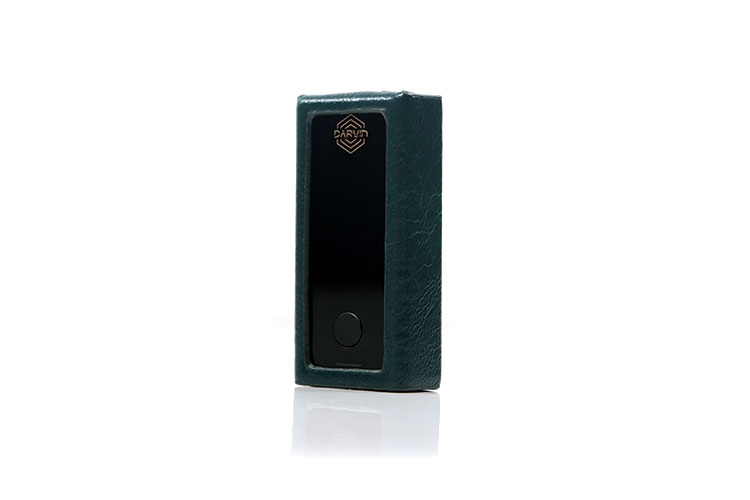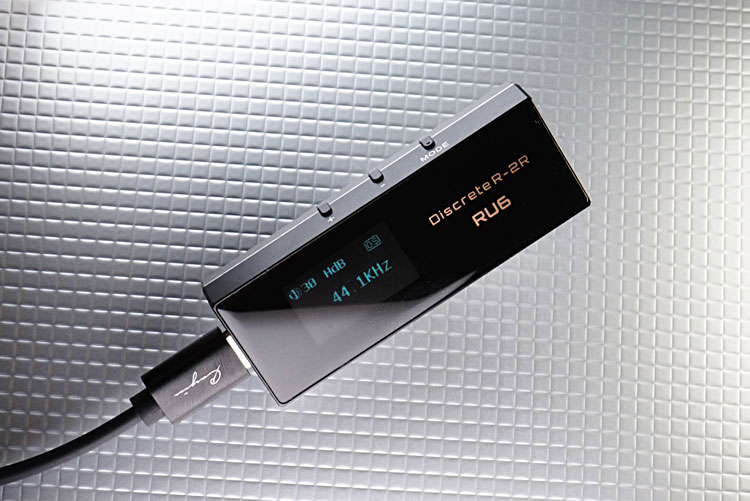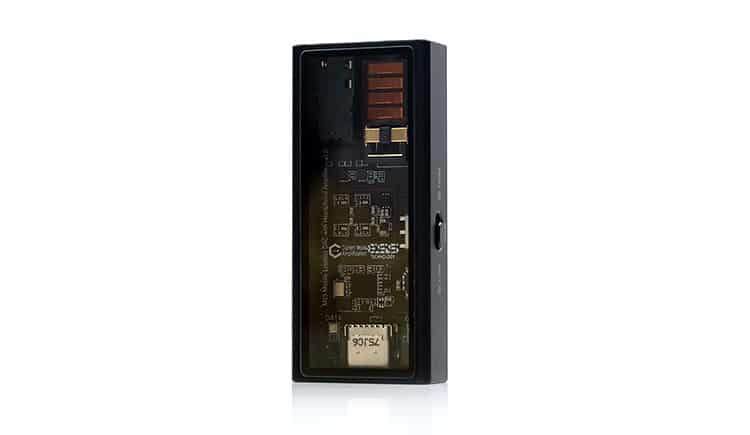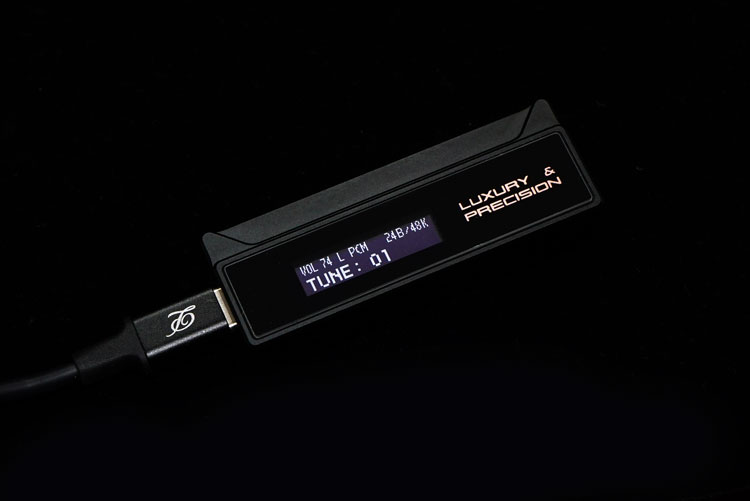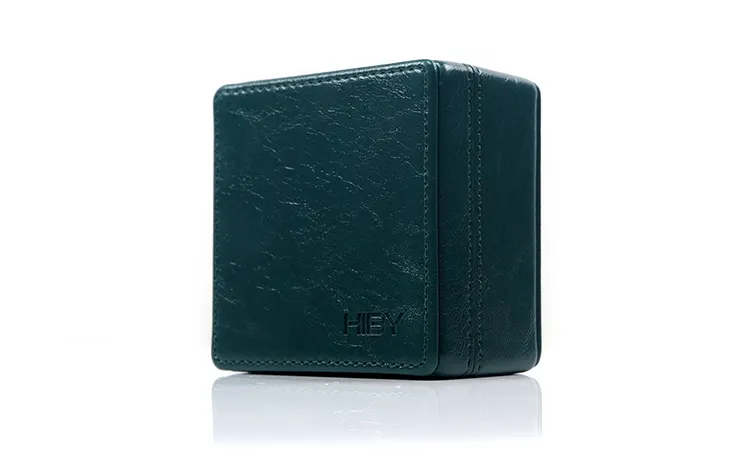Select Comparisons
The following comparisons were completed using a Samsung S23 Ultra as our main OTG transports combined with a Noble Audio Viking Ragnar and an Empire Ears Odin as our paired IEMs.
Cayin RU6
$249
The Cayin RU6 was the first R2R dongle to hit the market back in late 2021 and one which we reviewed in early 2022, with it going on to receive our Top Gear Award that same year.
Technical
On a high level, there is a fair degree of technical overlap. Both are USB-powered R2R dongles using 48 ±0.1% matching resistors per channel making a total of 96 resistors in total.
I would presume the resistors are not as high a quality as their respective higher-end offerings such as the Cayin R01 and the RS6. In fact, Cayin is on record as saying so.
Decoding is at a higher level from the FC6 at up to DSD512 and PCM 32BIt/768kHz compared to the RU6’s DSD256 and PCM 32BIT/384kHz with the FC6 also able to render MQA up to 8X.
Both use a mix of discrete engineering with opamps for voltage amplification though the RU6 goes one step further with a discrete-engineered resistor array volume control designed to mimic a stepped attenuator. You get 99 steps of very fine levels of volume control compared to a more simplistic 35-step control level from the FC6.
Power is a differentiator. The FC6 is purely single-ended whereas the RU6 is a mix of balance and SE with a top rating of 235mW from its 4.4mm output and 138mW from its SE output on a 32Ω load.
The FC6’s 3.5mm TRS output maxed out at 100mW on 32Ω and is thus not as flexible for higher loads and a no-go for balanced 4.4mm cables.
Design
The RU6 is the bigger of the two dongles with perhaps a slightly higher level of engineering on the chassis cutting but not to a level that you would notice right away. The size of the FC6 and its cozier color schemes is probably the first thing that will grab you.
Both have informative screens but the FC6 LED color coordination, larger font, and much more intuitive UI make it a more enjoyable experience. Both dongles offer a NOS/OS feature control and they do work well, however, beyond that they have some differing options.
I would say the FC6 is more feature rich in terms of filters with no less than 5 from their Darwin Architecture available as clickable options. The RU6 has no such filters but it does have a gain option, which, combined with its balanced output makes it a more powerful option for dynamics with less efficient gear.
Both will operate as USB-DACs and OTG to smartphones and though neither have dedicated software the HiBy Music app will interface nicely with both for dedicated driver output as well as MSEB or DSP controls.
Performance
There are some distinct differences in how each sound signature comes across with both of our tested monitors with both in NOS using their respective SE outputs.
The FC6 aims more for the lows in terms of sub-bass presence and volume, it has a thicker bass response and a weightier one at that. You can easily pick out the additional bass weight switching between them with the Odin’s excellent woofer tuning played to its strength.
Perhaps less apparent with the Viking Ragnar’s less aggressive bass tuning but still enough to say the FC6 is the firmer of the two on the lows.
Where the RU6 comes to the fore is the mids and highs sounding more forward than neutral and more extended in the upper treble. As a result, it sounds a bit more spacious to my ear with more headroom and a little more definition and refinement on each note also with that additional treble overtone giving each note a bit more clarity.
The FC6 in NOS favors a thicker broader sounding note, a bit rougher around the edges with the OS producing a more refined harmonic balance. The Ru6, likewise, has a more controlled OS mode but both for me sounded diminished and too controlled in their respective oversampling states.
I would go with the FC6 with the Odin, simply because of it more neutral mids positioning, darker highs, and thicker bass response which gels well with the aggressive but sometimes shouty Odin tuning.
I would go with the RU6 though with the Viking Ragnar. It fills the soundstage better for me and produces a better tonal quality to the mids and highs which I think is essential for the Ragnar to sound at its best.
Questyle M15
$249
The bigger brother of the M12, the current mode Questyle M15 was launched last year as the company’s flagship dongle DAC and was reviewed by us in that same year.
Technical
The M15 is a delta-sigma dongle and uses a single 32BIT 2-channel ES9281AC PRO as opposed to the FC6’s 96 resistor R2R array for decoding.
Both are compatible with Android with a top rating decoding ability a bit lower on the M15 at DSD256 as opposed to the FC6’s DSD512 and PCM 32BIT/384kHz compared to 32BIT/768kHz. Both dongles offer 8X MQA unfolding capability.
Unlike the FC6, there are very few additional features on the M15 save for a high and low gain option. It does not offer any oversampling or filter modes save for whatever comes downstream from apps such as HiBy Music.
The M15 is also missing an onboard volume control which is its Achilles heel. All volume is via the source’s own volume control be it USB driver based or generic and can be tricky to manage for efficient IEMs.
On paper, the FC6 is the more powerful dongle despite not having the M15’s balanced 4.4mm output option. In SE the FC6 is capable of 100mW whereas the M15 on SE low gain is 29.95mW and on high its 42.25mW into a 32Ω load. Going balanced the M15 has a maximum of 77.11mW at 32Ω, still lower on paper than the FC6.
However, the M15’s amplification is current mode and the numbers on paper are very deceiving as at least subjectively, is a very powerful dongle, even with less efficient gear.
Design
The M15 is one of the biggest dongles I have reviewed to date and sadly, one of the lowest in terms of usability features. Aside from the gain switch it only offers either a 4.4mm or 3.5mm PO output and its USB-C port on the rear.
Unlike the smaller FC6, it has nothing in the way of a GUI LED screen, filters, or onboard volume control. It does have a small LED indicator behind its fancy glass screen which operates in the same manner as the FC6 LED strip in terms of syncing with the audio output sample rates.
The M15 gain system will also light up in red if you are switched to high gain and green for low gain, a feature that is missing on the FC6.
Aesthetically both are built quite well though the intricacy of the larger M15 with its clear glass panel top makes it a very eye-catching design. The FC6 compensates with the more engaging LCD screen and more hands-on controls and of the two, it has the better control set for features and options.
One small thing I do like about the M15 system is that it will not power on until you plug in the jack of your gear and will turn off the second you disconnect the IEM or headphone jack. A useful phone battery-saving feature.
Performance
I would take the dynamics of the M15 over the FC6, but I would vote for the timbre of the FC6 over the M15. And that sentiment is with both of the tested monitors, the Viking Ragnar and the Odin.
The M15 does have more headroom and you can tell it generates more power from its superior dynamic range with that gain switch generating even more ‘oomph’ in SE mode never mind going balanced.
The M15 bass is just as deep, probably punchier, and with superior layering and clarity. The highs are roomier, airier, and with more extension compared to the FC6.
However, the FC6 is more analog sounding, smoother also with less harmonic dissonance over the upper mids and treble; two key areas that the Odin and Ragnar need careful matching on. The attack and natural sibilance here is slightly softer which, in turn, helps higher pitching vocal and percussion timbre come across as more natural sounding.
The M15 percussion timbre is sharper, thinner, and has a bit too much treble overtone to sit easy on my ears with both monitors fleshing that out a bit too much.
I would pair the M15 with difficult-to-drive gear, especially with the balanced output option. It has one of the best dynamic ranges and power from any dongle I have tested but needs a more forgiving monitor to get the timbral coloration just right.
The FC6 is more neutral, not as aggressive, and easier on the ear with its warmer analog overtone. It is more flexible for efficient monitors that have a brighter sound signature or aggressive upper mids.
Luxury & Precision W2
$299
The Luxury & Precision W2 was launched in the first half of 2021 and was part of the first wave of high-end dongle DAC to challenge the budget DAP market. It is also our Top Gear Award winner for 2021.
Technical
The W2 is a delta-sigma dongle DAC with the popular CS43198 chipset in a dual configuration supporting a balanced output circuit. The FC6 is single-ended with a 96 resistor network or 2 x 48 per channel for its decoding.
The W2 also has a patented on-chip DSD processor that supports up to DSD256 in direct mode and 50kHz filtering. It also has a dual 3.5mm optical output which a lot will find handy for classic HiFi connectivity.
The FC6 will go higher though at up to DSD512 and PCM 32BIT/768kHz as opposed to 32BIT/384kHz as well as offer MQA 8X for those that still use that format.
The W2 offers a balanced amplification output compared to the FC6 which only offers an SE PO. It is a bit more powerful on its SE also at 125mW on a 32Ω load compared to the FC6’s 100mW maximum rating. For balanced, the W2 can offer 4.4mm output at up to 230mW @32Ω.
The W2 is also one of the best-equipped dongles for filters and EQ options, more so than the FC6. Both have NOS/OS options, though with the W2 this is alongside two other fast and slow filters whereas the FC6 has 5 additional filters as well as NOS/OS in a separate category.
The EQ options are unique to the W2, nothing like that on the FC6 and its styling options for specific IEMs actually remind me a little of the Darwin Architecture features on the RS6 and RS8.
Design
The W2 is on the smaller side for a dongle when compared to the M15 and the RU6 but still a fair bit bigger than the diminutive FC6. It is finished in black as opposed to either black or green for the HiBy aesthetic but the intricacy of the CNC machining on the aluminum body on the W2 is more intricate.
For me, the FC6 LCD screen is the better product with the W2 faithfully following an old-school ticker tape or pager-style monotone display.
Granted, everything is there that you need in terms of volume, gain, and sample rates but it’s a bit on the small and cramped side whereas the colored FC6 format is simpler but more effective as a result.
Both dongles have onboard volume control and a mode button though the W2 has no LCD light indicating sample rate opting instead for displaying the actual sample rate in digits in the LCD display.
The key I/O difference is the additional 4.4mm output but also the ability for the 3.5mm to dual for optical output. Both dongles will operate in USB-DAC mode with either PC or MAC and both are compatible with Android.
One final thing to note, the W2 comes with an OTG Lightning cable which is not the case with the FC6 meaning you buy it as an optional extra.
Performance
Both dongles have satisfactory bass weight and neither has an overly bright tonal signature that will clash with either the Ragnar or the Viking.
Where the difference lies for me is the amount of decay coming through with the W2 creating a bit of a drier tone closer to a solid-state push-pull quality with excellent energy and pace.
The FC6 is more languid in its delivery and if you like, more akin to a SETA amp, with superior staging width and generally a more atmospheric or holographic dimension to its staging performance.
The W2 will sound a bit more articulate and ‘faster’ as a result, and that works really well with fast-tempo music or rapid bass movement. Whereas the FC6 has a bit more warmth and bloom and more decay that tends to beef up the low-end note a bit more but at the cost of some nuanced articulation.
The same pattern runs throughout the mids. I do prefer the FC6 in terms of width, it pushes out a bit wider and adds richer and more pleasing texture to vocals with background vocals sounding exquisite.
However, the precision imaging tends to favor the W2 so whilst its more centered its ability to render complexity in an accurate manner is very strong.
Our Design
Whilst there is some healthy competition out there, the HiBy FC6 succeeds in delivering a unique and very listenable analog quality that makes it a very easy dongle to pair with a wide variety of IEMs.
It also has some pleasing density and a bit of welcome grunt combined with fulsome mids and relaxed highs. Both the NOS and OS modes have enough qualitative differences to give you some real-world benefits to fine-tune for either bright or bassy headgear depending on your preferences.
It’s also very petite, and well-packaged with a best-in-class LCD screen that belies its size such is its ease in terms of legibility.
Is it perfect? No, the non-USB Exclusive driver mode seems to be noisy with certain smartphones. It also lacks a balanced amplification design that other high-end dongles offer despite costing a bit more.
Despite the cons, the pros make the FC6 an endearing standout R2R dongle DAC rather than a ‘me-too’ copy of anything else out there on the market.
HiBy FC6 Specifications
- Headphone Output 3.5mm TRS and CTIA-Spec TRRS Headsets
- Display 0.96 Inch LCD (80*160)
- DAC Darwin Architecture (24bit R2R)
- Audio Format Support PCM768Khz/32bit DSD512
- USB Port Type-C
- Compatible with Android/Windows/Mac OS
- Output Level 1.8Vrms
- Output Power 100mW @32Ω
- THD+N 0.006%(32Ω)
- Noise 2.6UVrms
- SNR 117dB
- Dynamic Range 105dB
- CrossTalk Rejection 72dB
- Frequency Range 20Hz-40KHz (-3dB)

